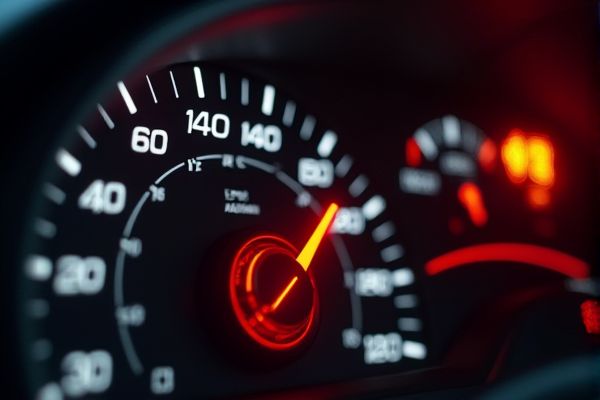
The DS DS3 check engine light indicates a potential malfunction within the engine management system, often related to issues with emissions components, sensors, or electronic controls, with common causes including faulty oxygen sensors or problems in the spark plug system. To resolve this alert, prioritize a detailed diagnostic using an OBD-II scanner to retrieve error codes, compare them against manufacturer data, and schedule targeted repairs to maintain peak vehicle performance and safety.
DS DS3 check engine light on meaning
Engine Management System Fault
Indicates issues with the engine's electronic control unit, often requiring fault code analysis for diagnosis.
Spark Plug Issues
Misfires can occur due to faulty spark plugs, which may temporarily resolve the problem but often recur.
Ignition Coil Problems
Faulty ignition coils can cause misfires and trigger the check engine light.
Carbon Build-Up in Inlet Valves
Common in THP engines, leading to misfires and requiring cleaning or walnut blasting.
Low Battery Voltage
Transient sensor errors can occur due to low battery voltage, especially in cold weather or short journeys.
Faulty Catalytic Converter
Serious engine issues can lead to catalytic converter damage, indicated by a flashing check engine light.
Particle Emission Filter Saturation
Common in diesel models, requiring filter cleaning or replacement.
For car users
If your DS DS3's check engine light comes on, immediately check for obvious issues--such as a loose fuel cap, low oil, or coolant levels--and reduce your driving until you can safely stop for further inspection. Then use an OBD-II scanner to retrieve any diagnostic codes or contact a trusted mechanic promptly to assess the situation and prioritize any necessary repairs.
Ignoring the check engine light
Ignoring the DS DS3 check engine light can result in reduced fuel efficiency--potentially lowering performance by around 10%--and may lead to further engine misfires, increased emissions, and damage to critical engine components. Over time, minor issues can escalate into significant and costly repairs, with data showing that proactive diagnostics and maintenance can reduce repair bills by up to 30% compared to waiting for a major failure.
How to reset?
Use an OBD-II scanner to clear the DS DS3's fault codes by connecting to the car's diagnostic port and following the scanner's reset procedure, or disconnect the battery for about 15-30 minutes to reset the onboard computer. Always address and repair the underlying issue causing the check engine light to illuminate before resetting to ensure long-term engine performance and avoid recurring faults.
A DS DS3 with an illuminated check engine light typically incurs an initial diagnostic cost of about $50-$150, which helps pinpoint issues ranging from faulty sensors to more significant engine malfunctions. Depending on the specific problem, subsequent repairs may total between $200 and over $1,000, underscoring the importance of prompt, data-driven engine assessments to manage repair expenses effectively.
Future prevention
Regular maintenance is key for preventing the DS DS3 check engine light from turning on--ensure timely oil changes, spark plug inspections, sensor checks (especially oxygen and mass airflow sensors), and regular OBD-II diagnostic scans to catch issues early. Prioritize using high-quality fuel and strictly following manufacturer service intervals, as addressing minor faults and monitoring engine diagnostics can substantially reduce the risk of triggering the warning light.
